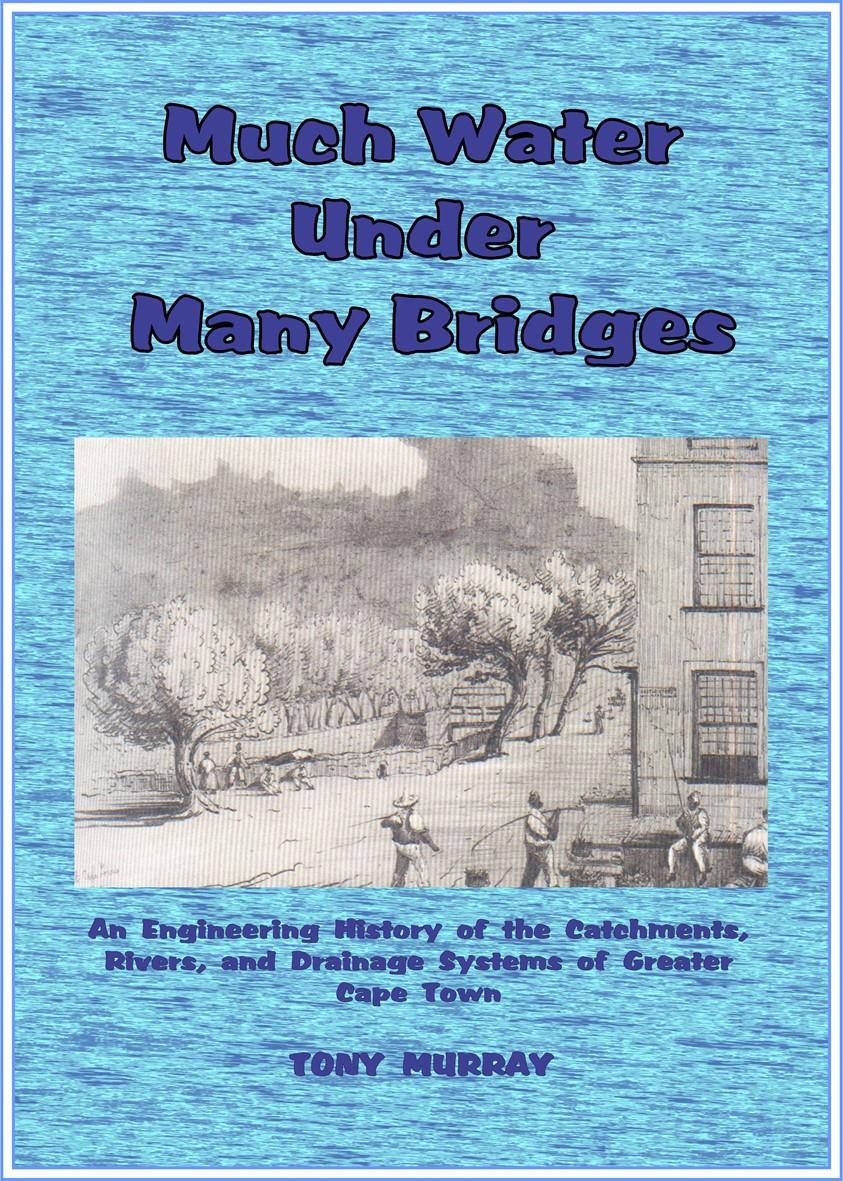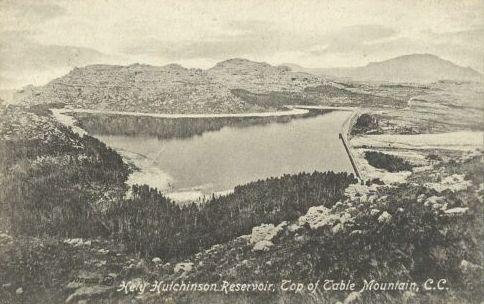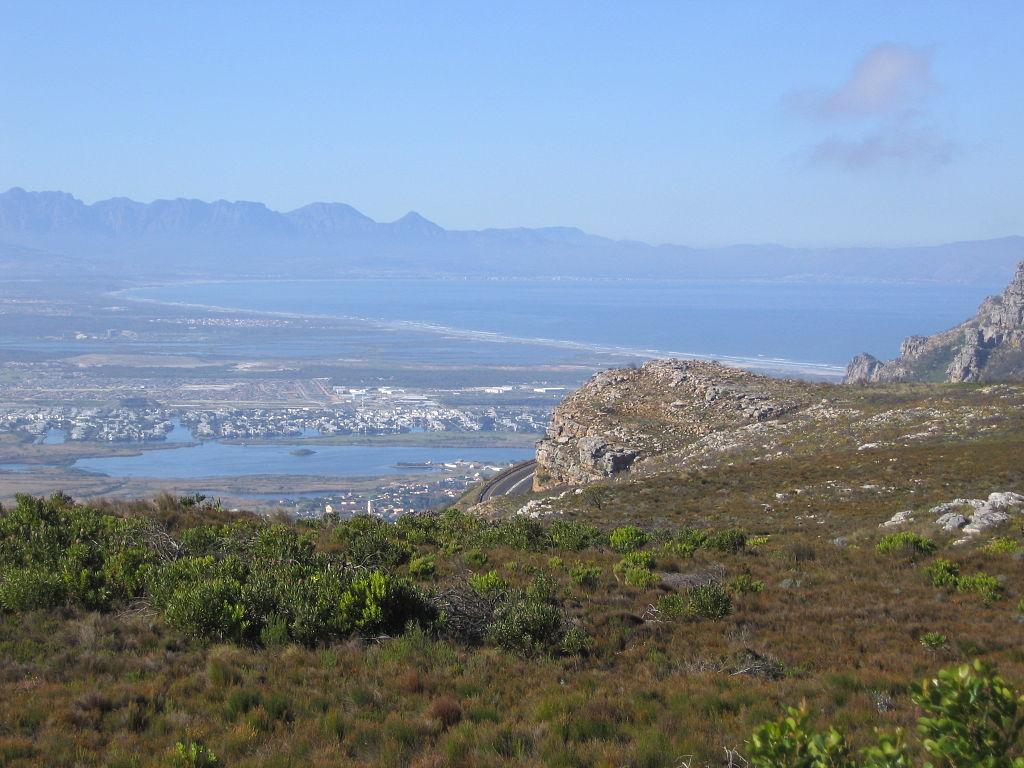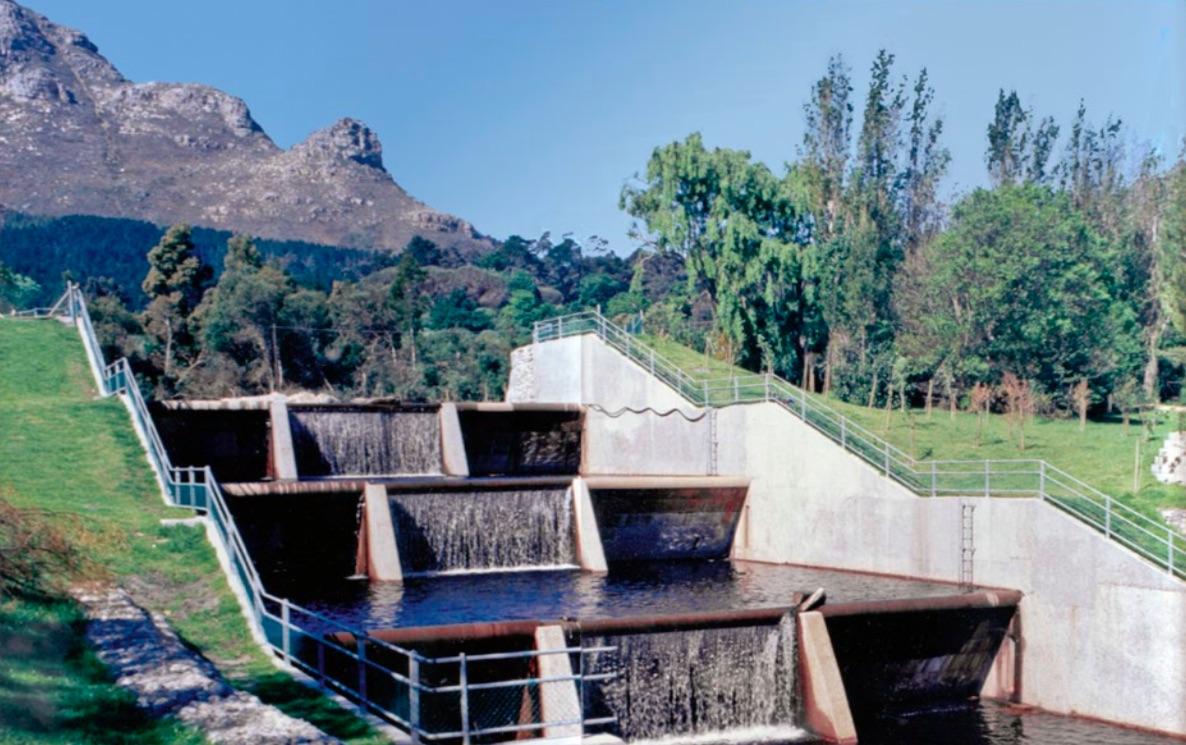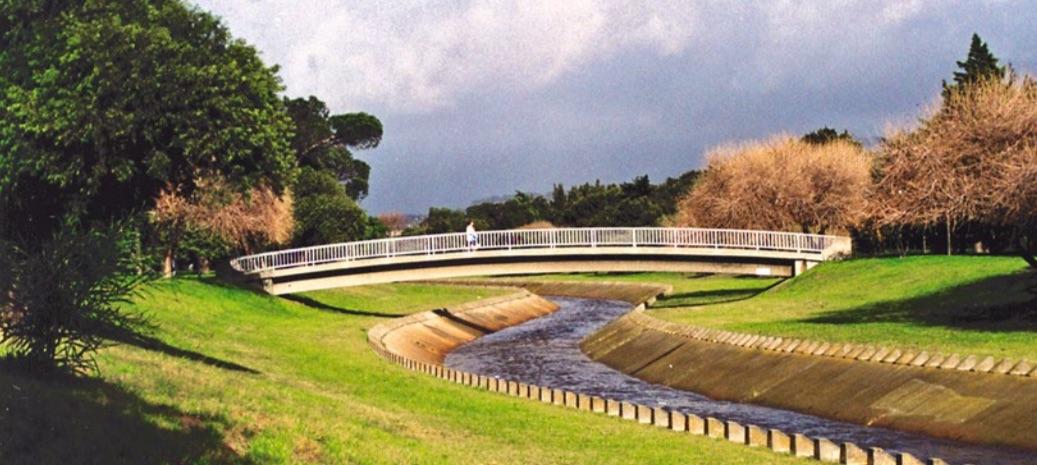
A review by Prof. Kevin Wall of Tony Murray’s new book titled, 'Much Water under Many Bridges. An Engineering History of the Catchments, Rivers, and Drainage Systems of Greater Cape Town'. Originally published in the April edition of Civil Engineering
This book is truly a labour of love. Every page is a tribute to Tony’s enthusiasm for his subject and his intimate knowledge, gained in a lifetime of working in Cape Town. Nobody else could have written this book – certainly not with the empathy for the subject, and the understanding that comes from having been there at the time of an appreciable number of the events described.
Book Cover
Getting it published has been a saga. More than 90% of this book was publication-ready twenty years ago, and it is only now, thanks to Tony’s persistence and, latterly, the intervention of the SAICE History and Heritage Panel, that it has reached the bookshelves.
If you have any interest in engineering history, get yourself a copy. If you live in or know Cape Town, get yourself a copy – you will be surprised how much you will learn about Cape Town’s complex topography. If you would like a good read about the evolution of a city, and the politics and personalities around its service delivery, even more reason to get a copy!
Gems include the stories of:
- The rivalry between the “Clean Party” and the “Dirty Party” of the 1880s.
- The absence of sanitation regulations, and the battle by engineering and medical experts (and others) to convince the councillors, in the first instance, and then the citizenry, progressively over decades, to institute improvements, and to pay for them.
- The high quality of the workmanship in those early days – as evidenced by the condition of the masonry outfall of 1900 which is still in service after 120 years.
- The fate of the “Varsche River”, the stream from Table Mountain that provided ships with water and was the reason why the Dutch chose to establish a refreshment station here, rather than at the much superior, but waterless, harbour of Saldanha Bay.
- The controversy that has erupted every time (for the last hundred years anyway) a proposal is made to discharge effluent into the sea.
- The parochialism of some of the municipalities (e.g. the fate of Lunn’s imaginative scheme for the Elsieskraal) and their determination (on occasions – not always) to not cooperate with their neighbours to implement a water or drainage scheme with benefit beyond their borders.
- The drastic effect of urban development, with greater paved areas, on drainage systems of the Cape Flats – ill-defined watercourses became major streams, and winter flooding became frequent. All this required expensive engineering works, while over the same period surface water quality deteriorated markedly.
- The engineering works that we take for granted, but which, if they were to be proposed today, would no doubt run into enormous environmental opposition (e.g. the mountaintop dams and Ou Kaapse Weg, built in the 1960s through then pristine mountain terrain).
Old postcard of the Hely Hutchinson Resevoir on top of Table Mountain
Ou Kaapse Weg (Wikipedia)
The extent to which municipal officials became highly competent “professional client-engineers” (to use Tony’s terms), to which consultants were selected based on known competence rather than price competition, and to which trust formed the basis of many a successful cooperation, is apparent from a reading of every page – as is the emphasis on service delivery above all other considerations. To enable this, the municipalities employed large numbers of engineering graduates. For example, in the 1980s the Divisional Council of the Cape, by no means the largest municipal authority, had 26 fully qualified engineers on its payroll.
Longkloof Weir (Much Water under Many Bridges)
Finally, and this is not a criticism – the omission is understandable in the light of the book’s publication history – it is a pity that Tony was not able to update the book before publication. For example, where the history of the many Table Mountain springs is told, it would have been useful to read of the renewed interest in them, and in groundwater generally, triggered by the so-called “Day Zero”.
The book is amply illustrated with sketches and photographs of the period. The many maps are essential, even for someone who thinks they know Cape Town well.
An ideal present for a loved engineer or someone who lives (or wishes they lived) in Greater Cape Town. Heartily recommended!
The book can be purchased via the SAICE website (click here).
Tony Murray is a retired civil engineer who has developed an interest in local engineering history. He spent most of his career with the Divisional Council of the Cape and its successors, and ended in charge of the Engineering Department of the Cape Metropolitan Council. He has written extensively on various aspects of his profession, and became the first chairman of the History and Heritage Panel of the South African Institution of Civil Engineering. Among other achievements he was responsible for persuading the American Society of Civil Engineers to award International Engineering Heritage Landmark status to the Woodhead dam on Table Mountain and the Lighthouse at Cape Agulhas. After serving for 10 years on SAICE Executive Board, in 2010 he received the rare honour of being made an Honorary Fellow of the Institution. Tony has written manuals, prepared lectures and developed extensive PowerPoint presentations on ways in which the relationship between municipal councillors and engineers can be more effective, and he has presented the course around the country. He has been a popular lecturer at UCT Summer School and has presented five series of talks about engineers and their achievements. He was President of the Owl Club in 2011. His book "Ninham Shand – the Man, the Practice", the story of the well-known consulting engineer and the company he founded, was published in 2010. In 2015 “Megastructures and Masterminds”, stories of some South African civil engineers and their achievements was written for the general public and appeared on the shelves of good bookstores. “Past Masters” a collection of his articles about 19th century South African Engineers is also available from the SAICE Bookshop.
Prof Kevin Wall is a civil engineer and town planner with a lifetime focus on improving service delivery in South Africa. He has also been dedicated to drawing attention to the need for infrastructure maintenance. In 2017 Prof Wall received the Gold Medal of the South African Institute of Civil Engineering (SAICE) for his outstanding individual contribution to the industry and profession of civil engineering. At the annual NSTF-South32 awards ceremony the following year, Prof Wall was honoured with the Lifetime Award. Prof Wall’s work ranged from skills development, infrastructure maintenance and service delivery, including report cards on national infrastructure, involvement in changing policies and working on community and international projects among other. (Bio via the University of Pretoria)

